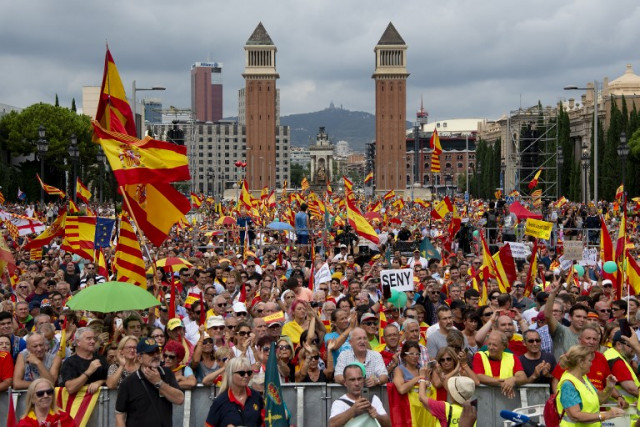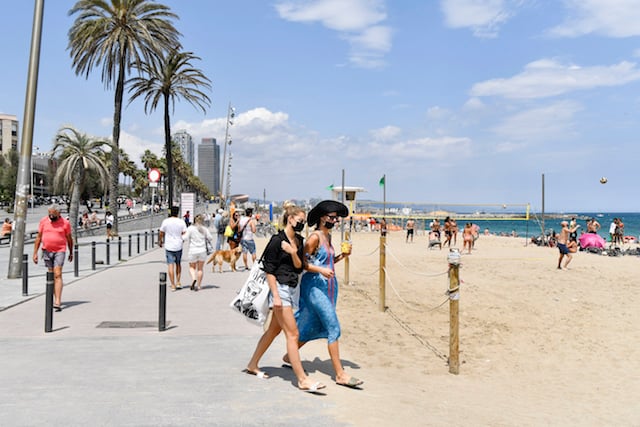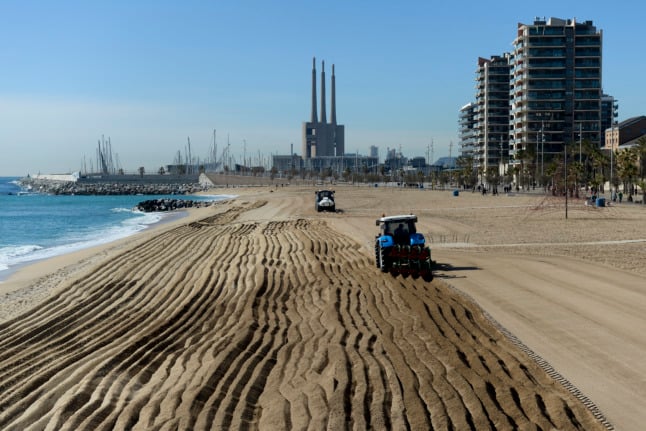Nearly a year after the failed attempt to break away from Spain, the situation remains deadlocked.
State of play
Catalonia's parliament declared independence on October 27 following the banned October 1 independence referendum, which was marred by clashes between police officers and voters.
The declaration triggered Spain's worst political crisis since the restoration of democracy following the death of dictator Francisco Franco in 1975.
Spain's central government, headed at the time by conservative Mariano Rajoy, responded by suspending the autonomy of the wealthy northeastern region which is home to some 7.5 million people. He dissolved its parliament and sacked Catalonia's separatist government headed by Carles Puigdemont.
Puigdemont and several members of his government left Spain a few days later to avoid being arrested. Other separatist leaders were jailed over their role in Catalonia's independence push.
Charged with rebellion, which carries a jail term of up to 25 years, numerous Catalan separatist leaders are in exile or in prison awaiting a trial, which is expected to take place at the end of the year.
READ MORE: All about the Catalan crisis

A protest calling for freedom for political prisoners. Photo: AFP
The separatists plan to use Tuesday's annual march to call for freedom for these “political prisoners” as they call them. “Diada” commemorates the fall of Barcelona in the War of the Spanish Succession in 1714 and the region's subsequent loss of institutions and freedoms.
'No' separatist strategy
Separatist parties won a slim majority of 70 seats in the 135-seat Catalan parliament in early regional elections on December 21 even though they fell short of a majority of the popular vote, securing 47.5 percent in a region that remains deeply divided over the issue of independence.
While Catalonia's new leader Quim Torra, who Puigdemont picked as his successor, has defiantly relaunched the push for independence, “there is no strategy in the short, medium or long-term,” said Oriol Bartomeus, a politics professor at the Autonomous University of Barcelona.
“Listening to the speeches of the separatist leaders, it seems like there is no plan. There is a sort of hangover with respect to last year,” he added.
The separatist camp is split over the way ahead with pro-independence party ERC adopting a more cautious stance than Torra.
Gabriel Rufian, an ERC member of Spain's parliament, on Sunday called for the bubble of “magical independence” to be burst, in a reference to announcements by separatists leaders which then had no effect.
Bartomeus said he did not believe the Catalan government, which regained its autonomy once Torra came to power, would stage another referendum or make another declaration of independence.
But he warned that if Catalan separatist leaders are sentenced to jail, this could lead to “an act of disobedience to capitalise on the dissatisfaction of the separatist base”.
Dialogue of the deaf

Protesters gather for a demonstration against Catalan independence and in favor of Spanish unity in Barcelona on September 9th. Photo: AFP
Spain's new Socialist Prime Minister Pedro Sanchez — catapulted to power in June with the support of Catalan separatist parties in a no-confidence vote that ousted Rajoy — has taken a softer line on Catalonia.
He has renewed dialogue with the Catalan government and last week offered Catalonia a referendum on greater autonomy.
Torra swiftly rejected the proposal and warned that if Madrid did not allow the region to hold a legally binding independence referendum his government would enforce the “mandate” of the banned October 1st plebiscite, a move that would see Madrid once again suspend Catalonia's autonomy.
A majority, around two million people, voted for independence in the October ballot, but turnout was low as opponents did not show up for a vote Spain declared illegal. The results were not recognised internationally.





 Please whitelist us to continue reading.
Please whitelist us to continue reading.